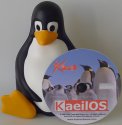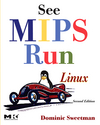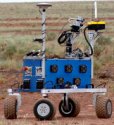Linux powers low-cost “turn-key” 3D stereo vision system
September 18, 2006 Computer vision specialist Tyzx is shipping a relatively low-cost, standalone, Linux-based stereo 3D vision system targeting high-volume commercial and defense robots, automobiles, and person-tracking security systems. (more…)
Computer vision specialist Tyzx is shipping a relatively low-cost, standalone, Linux-based stereo 3D vision system targeting high-volume commercial and defense robots, automobiles, and person-tracking security systems. (more…)
 A 28-page book chapter about loadable Linux kernel modules and device drivers is available for free download. Entitled “Kernel Modules and Device Drivers,” the chapter is excerpted from the second edition of Linux for Embedded and Real-Time Applications, by Doug Abbott.
A 28-page book chapter about loadable Linux kernel modules and device drivers is available for free download. Entitled “Kernel Modules and Device Drivers,” the chapter is excerpted from the second edition of Linux for Embedded and Real-Time Applications, by Doug Abbott.  Kontron has added a larger LCD option to its line of thin-client HMI (human-machine interface) subsystems. The
Kontron has added a larger LCD option to its line of thin-client HMI (human-machine interface) subsystems. The  Forget Symbian! The “war of the OSes” in mobile phones looks rosy for Linux and Windows, according to a detailed, insightful, freely available whitepaper from ARCchart. Funded by Trolltech, the 27-page “independent” report overviews the entire cellphone software market, offering in-depth reviews of 15 software stacks.
Forget Symbian! The “war of the OSes” in mobile phones looks rosy for Linux and Windows, according to a detailed, insightful, freely available whitepaper from ARCchart. Funded by Trolltech, the 27-page “independent” report overviews the entire cellphone software market, offering in-depth reviews of 15 software stacks.  Aewin Technologies has extended its range to Geode LX800-based SBCs (single-board computers) to include an ETX module. The CM-6120 features up to 1 GB of SDRAM, a CompactFlash socket, and TV output, and includes support for embedded Linux, according to the company.
Aewin Technologies has extended its range to Geode LX800-based SBCs (single-board computers) to include an ETX module. The CM-6120 features up to 1 GB of SDRAM, a CompactFlash socket, and TV output, and includes support for embedded Linux, according to the company.  Toradex is sampling what it calls the “world's first” embedded computer module based on Intel's new Monahans XScale processor. The SODIMM-sized Colibri PXA290 comes a Windows CE 5.0 BSP pre-installed, with a Linux BSP expected in November, a company spokesperson said.
Toradex is sampling what it calls the “world's first” embedded computer module based on Intel's new Monahans XScale processor. The SODIMM-sized Colibri PXA290 comes a Windows CE 5.0 BSP pre-installed, with a Linux BSP expected in November, a company spokesperson said.  Koan Software has revised its low-cost commercial Linux distribution for embedded and industrial applications. The only change in Version 3.0 of KaeilOS (formerly Klinux, formerly K-Linux) appears to be the addition of Eclipse 3.2-based development and debugging tools.
Koan Software has revised its low-cost commercial Linux distribution for embedded and industrial applications. The only change in Version 3.0 of KaeilOS (formerly Klinux, formerly K-Linux) appears to be the addition of Eclipse 3.2-based development and debugging tools.  Dominic Sweetman of MIPS Technologies has updated his guidebook to the MIPS architecture. See MIPS Run…Linux offers a technical look at MIPS32, and uses Linux to illustrate how operating system kernels and application environments can be built on top of the RISC-based architecture.
Dominic Sweetman of MIPS Technologies has updated his guidebook to the MIPS architecture. See MIPS Run…Linux offers a technical look at MIPS32, and uses Linux to illustrate how operating system kernels and application environments can be built on top of the RISC-based architecture.  [Updated Sept. 16] — Two Linux-based lunar rovers are on maneuvers — and Internet webcams — this week in the Arizona desert near Meteor Crater. The maneuvers are related to a NASA project tasked with developing extra-vehicular activity (EVA) hardware and procedures for planetary surface exploration.
[Updated Sept. 16] — Two Linux-based lunar rovers are on maneuvers — and Internet webcams — this week in the Arizona desert near Meteor Crater. The maneuvers are related to a NASA project tasked with developing extra-vehicular activity (EVA) hardware and procedures for planetary surface exploration.  Win Enterprises is sampling an inexpensive Linux-based hardware appliance aimed at IP PBXs (Internet protocol private branch exchanges), VoIP (voice-over-IP) routers, and other “converged” applications.
Win Enterprises is sampling an inexpensive Linux-based hardware appliance aimed at IP PBXs (Internet protocol private branch exchanges), VoIP (voice-over-IP) routers, and other “converged” applications.